The HTC One M9 Review: Part 1
by Joshua Ho on March 22, 2015 7:00 PM EST- Posted in
- Smartphones
- HTC
- Qualcomm
- Mobile
- Snapdragon 810
- One M9
GPU Performance
Although CPU is often the focus of any given SoC, it’s important to avoid using a weak GPU as even cases as simple as web browsing or navigating through a UI can rely on the GPU for rendering, in addition to the common use cases of gaming. It’s also possible that GPUs can be leveraged for compute, which has great use for cases like image and video processing. To this end, the Snapdragon 810 has an Adreno 430 GPU that runs at 600 MHz, similar to the Snapdragon 805’s Adreno 420. As a result, all of the improvements we’re seeing from the Adreno 420 to the Adreno 430 are solely the result of architecture and driver improvements rather than clock speed increases.
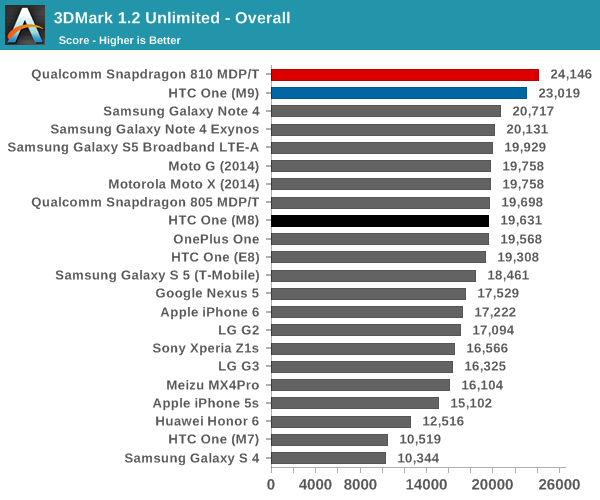

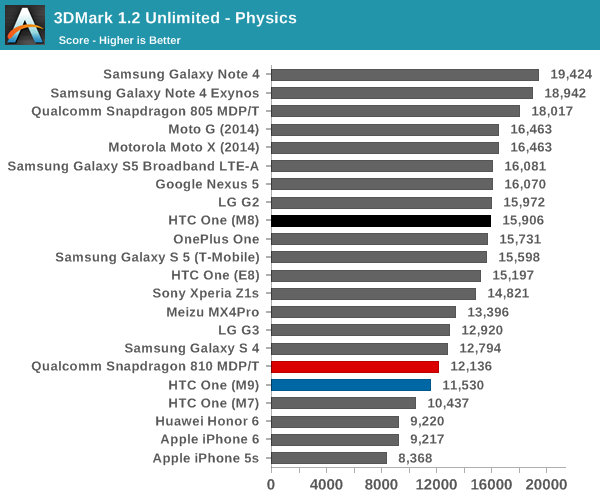
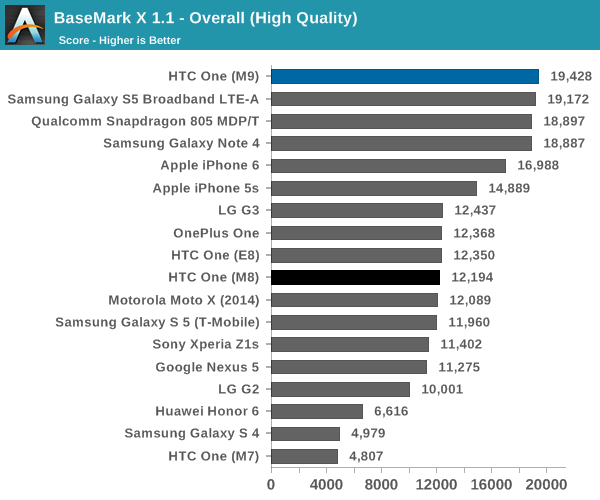
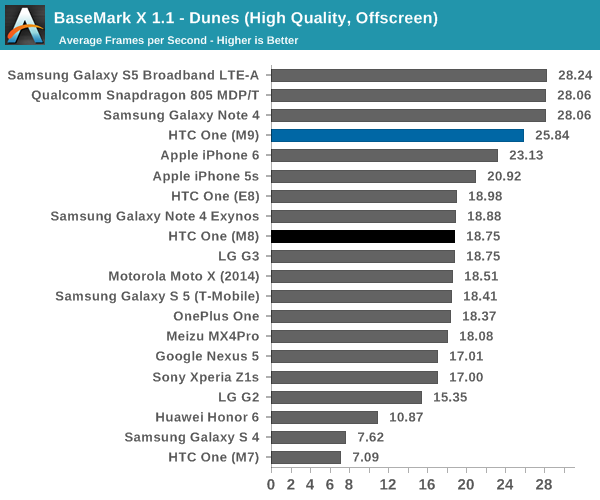
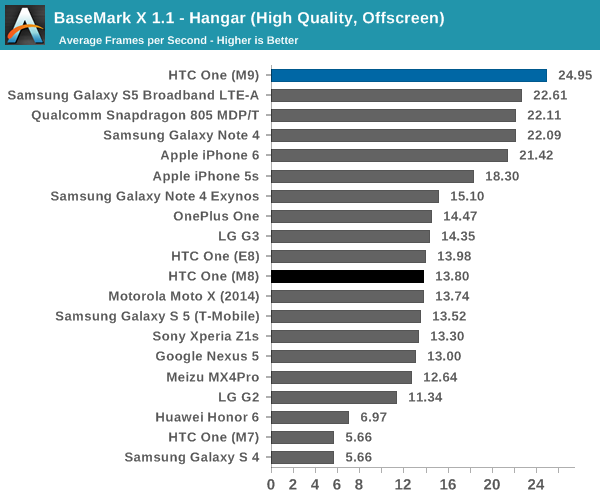

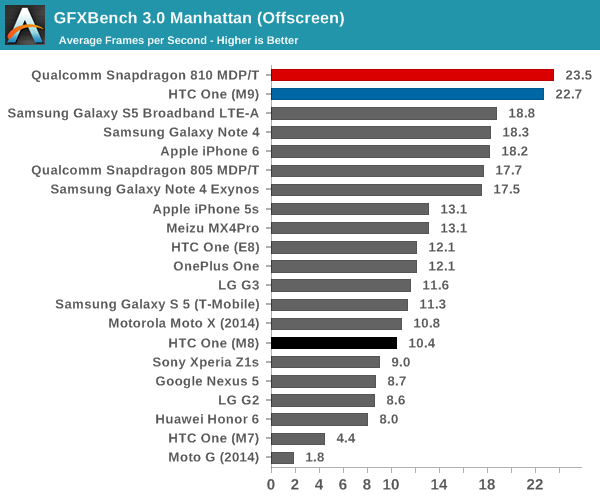
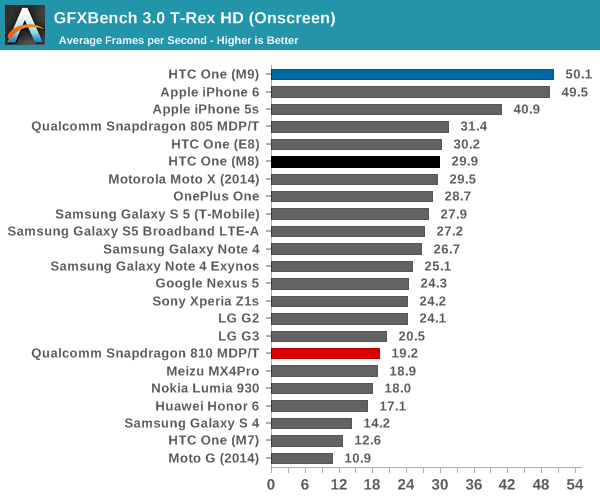
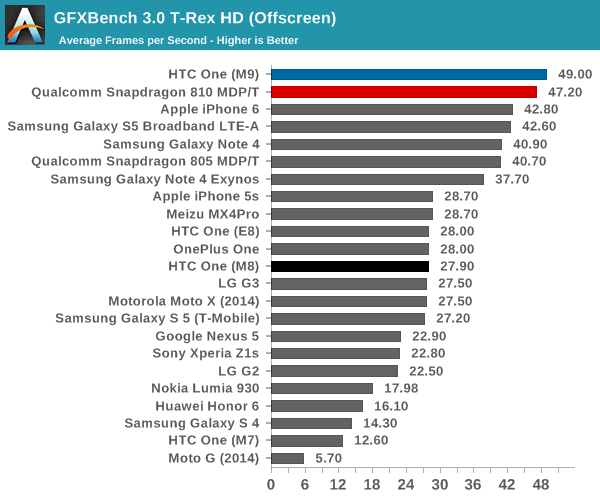
As one can see, the One M9 manages to deliver results that basically mirror what we saw with Qualcomm’s MDP/T, although there is some variance that can be seen. HTC did make the right call here with the 1080p display as we see a pretty massive jump in performance from the One M8 to the One M9 in GPU performance, and using a 1440p display would have eaten away most of these gains. I suspect that the hit to GPU performance with 1440p displays will be mostly compensated for by the next generation of SoCs, but for now I’m still not sure that it makes sense to push such a resolution on a phone.
NAND Performance
Storage performance is often an unnoticed aspect of any device, but it can often force itself to the foreground when it’s insufficient. Probably the most famous case of this is the Nexus 7 (2012), which was really the first device that caused people to start to look closer at NAND performance. While we’re close to a better solution for storage testing, for now we can still look at Androbench to get a decent idea of relative storage performance, although this is nowhere near as extensive as our SSD testing.
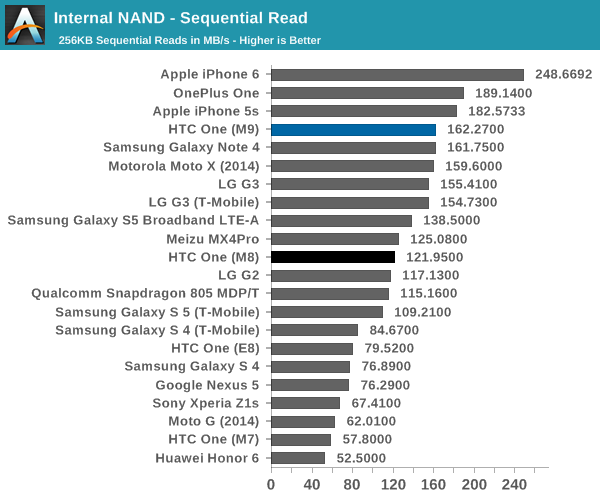
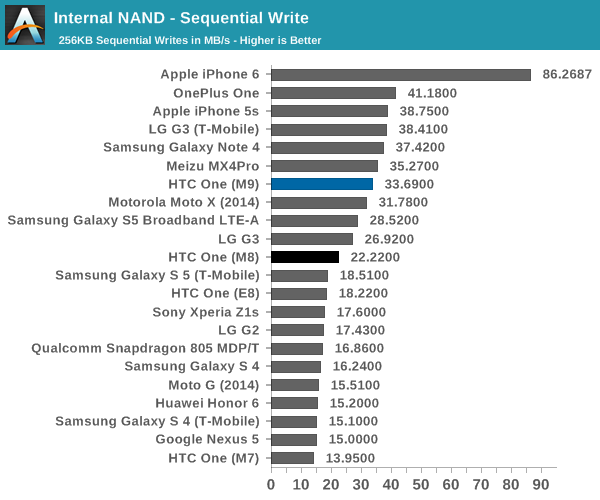
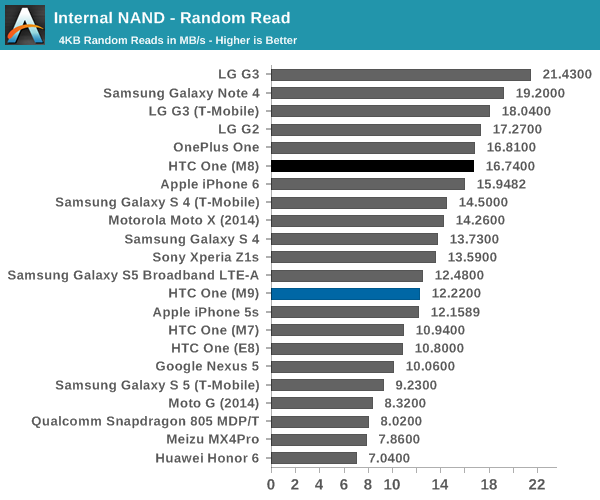
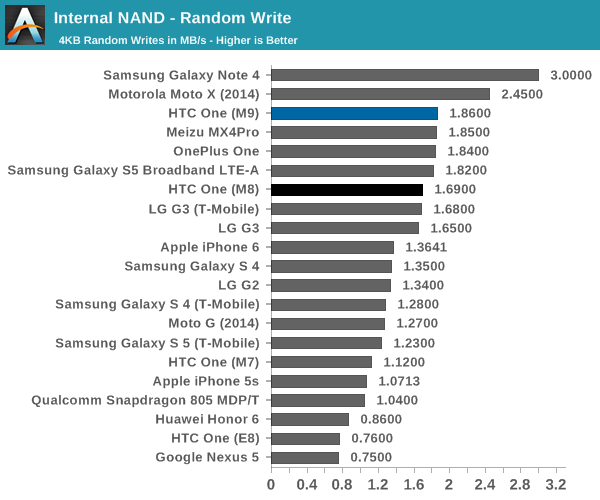
In this test, HTC does show some level of improvement over the previous generation but does regress a bit in the random read department. As far as I can tell, HTC is using Samsung’s eMMC solution here, with the model name BGND3R, as opposed to the One M8 which used a SanDisk eMMC IC. It's interesting to see how the One M9 still uses ext4 here, even though the Nexus 9 adopted F2FS. As far as I can tell, there seems to be a reason to adopting one filesystem over another but this reason is still unclear to me.










132 Comments
View All Comments
flyingpants1 - Monday, March 23, 2015 - link
Those are the dumbest reasons I have ever seen. One front speaker is infinitely better than one rear speaker. IR blaster is a gimmick feature. Amoled.. You're blaming Amoled for lollipop being white.. Jesus.hughlle - Tuesday, March 24, 2015 - link
One front speaker is worse than 2 front speakers. You call it a gimmick, others call it a great feature; I certainly wouldn't buy a new phone if it didn't have an IR blaster. And no, where did he blame amoled? He said that because lollipop is so white then the power saving ability of amoled is not really relevant in lollipop.Nice try and trying to spin everything though.
flyingpants1 - Monday, March 23, 2015 - link
Lol.. You can get used to having no buttons. You know like LG, Sony, Nexus 4,5,6, Motorola..You can't get used to having no front speakers.
Also the M9 has mSD which allows me to dump 128gb of music on there, or record 1080p videos continuously and switch out cards.
Black Obsidian - Tuesday, March 24, 2015 - link
Of course you can get used to having no front speakers. It's not as though rear-facing speakers don't work at all.Presumably the M9 also comes with a headphone jack and Bluetooth audio functionality, both of which offer listening options incomparably better than crappy phone speakers, whatever their orientation.
Notmyusualid - Wednesday, March 25, 2015 - link
I must humbly disagree with you Sir.Whatever 'other' audio connectivity exists, that will not suffice if I lean over to the phone in the car whilst in its holder, and choose to answer with 'speaker'. My GS5 can barely be heard, so bad to the point that I end the call and dial back when I stop.
I drive many company / rental cars, I'm not bluetoothing to each and every one, and I'm not the greatest fan of bluetooth headsets.
Notmyusualid - Wednesday, March 25, 2015 - link
No Sir. I can't get used to having no physical buttons, or M9 it would be for me.It matters not how many devices in existance have them, for I simply find them too buggy to use, they take up valuable screen space, and their nature of appearing / dissappearing gives me chest pains, for want of a better description.
And yes, once you've have had 'quality' front facing stereo speakers, 'it just seems illogical to do it any other way'.
lucam - Sunday, March 22, 2015 - link
Dear Anand,Why you haven't used the new GFXBench 3.1 as well as the new Basemark ES 3.1?
Andrei Frumusanu - Sunday, March 22, 2015 - link
GFXBench 3.1 was recently released only 2 weeks ago and is currently only available for Lolipop devices. We will adopt it in future reviews, but for now we can present more useful comparison data for 3.0.arayoflight - Monday, March 23, 2015 - link
Do you have a Galaxy S6 for review?Also, I think the Manhattan 3.0 and T-rex are more representative of real world performance then the ultra-high load of 3.1 in which the one with more compute performance wins.
lucam - Monday, March 23, 2015 - link
True, but the same was told last year for Manhattan 3.0 as it was very compute for that time.I guess in about 6 months- 1 years all mobile devices will run the new GFX 3.1 smoothly.